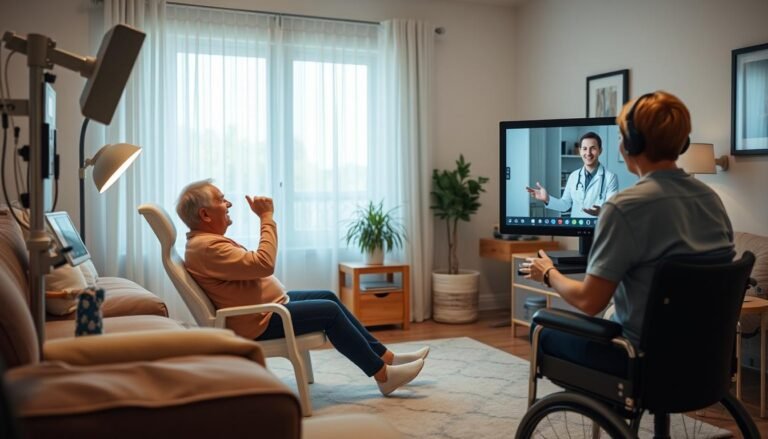
Introduction
Have you ever felt overwhelmed by your thoughts or behaviors, wishing for a way to gain control? Whether dealing with anxiety, stress, or other emotional challenges, many find comfort and solutions in behavioral therapy. Harnessing the Power of Behavioral Therapy in Everyday Life has proven essential for individuals seeking to create lasting positive change, manage their emotions, and improve their decision-making skills. This article aims to explore the facets of behavioral therapy and how you can seamlessly incorporate its principles into your daily routine, transforming not just how you cope but how you thrive.
Understanding Behavioral Therapy
What is Behavioral Therapy?
Behavioral therapy focuses on the relationship between thoughts, feelings, and behaviors. It operates on the principle that modifying negative behaviors can lead to a change in thoughts and feelings, fostering a healthier mindset. The most common forms include Cognitive Behavioral Therapy (CBT), Dialectical Behavior Therapy (DBT), and Exposure Therapy.
Why is Behavioral Therapy Important?
Behavioral therapy is not just for those with diagnosed mental health conditions. Its techniques can be applied in various everyday situations:
- Stress Management: Learn to manage daily stressors.
- Relationship Issues: Improve communication and understanding.
- Habit Formation: Replace negative habits with positive actions.
In this article, we will explore practical methods for harnessing the power of behavioral therapy in everyday life.
Key Principles of Behavioral Therapy
1. The Importance of Understanding Triggers
Understanding what triggers negative thoughts or behaviors is the first step in behavioral therapy. This can include stressful situations, specific environments, or even particular people.
Case Study: John’s Journey
John, a 32-year-old graphic designer, struggled with anxiety when presented with deadlines. By identifying that his anxiety was triggered by the pressure of time, he utilized behavioral therapy techniques to create a timeline with manageable segments.
| Trigger | Behavior | Coping Mechanism |
|---|---|---|
| Deadlines | Procrastination | Break tasks into smaller steps |
| Social situations | Avoidance | Gradual exposure to triggers |
| Criticism | Self-criticism | Positive self-affirmations |
John’s case illustrates the importance of recognizing triggers and how modifying responses can lead to reduced anxiety levels.
2. Behavior Modification Techniques
There are several core techniques within behavioral therapy that can be employed in everyday situations, including:
- Reinforcement: Rewarding positive behavior.
- Modeling: Learning by observing others.
- Desensitization: Gradual exposure to fear triggers.
Case Study: Lisa’s Transformation
Lisa, a high school teacher, experienced significant stress related to classroom management. By applying reinforcement techniques, she rewarded positive classroom behaviors, leading to a more harmonious environment.
| Technique | Application | Outcome |
|---|---|---|
| Positive Reinforcement | Rewarded students for good behavior | Improved classroom dynamics |
| Role Modeling | Displayed calm behavior in challenging situations | Students learned to emulate calmness |
| Gradual Desensitization | Allowed students to express concerns in a safe space | Increased student engagement |
Lisa’s story showcases how behavior modification can create a positive ripple effect within a community.
3. Mindfulness and Self-Reflection
Mindfulness practices and self-reflection are powerful tools for behavioral therapy. They allow individuals to engage in conscious awareness of their thoughts and feelings.
Techniques for Mindfulness
- Meditation
- Journaling
- Deep Breathing Exercises
Incorporating mindfulness into daily life helps us to remain centered, making it easier to implement behavioral strategies.
Practical Applications of Behavioral Therapy Techniques
1. Stress Management Tools
Stress is an unavoidable part of life, but how we respond to it can make all the difference. Harnessing the power of behavioral therapy in everyday life can offer transformative ways to manage stress effectively.
Tools to Implement:
- Time Management: Using planners to organize tasks.
- Relaxation Techniques: Engaging in yoga or guided meditations.
2. Improving Relationships
Many individuals can find conflict in personal or professional relationships. Applying behavioral therapy methods can help navigate these relationships more effectively.
Steps to Enhancement:
- Active Listening: Focusing on what the other person is saying.
- Expressing Emotions: Using “I” statements to communicate feelings without blame.
3. Habit Formation and Change
Changing long-standing habits can seem daunting. However, utilizing behavioral therapy techniques makes the process manageable.
Strategies for Success:
- Set Clear Goals: Establishing specific, measurable objectives.
- Track Progress: Keeping a journal of daily achievements and challenges.
Leveraging Technology for Behavioral Therapy
Mobile Apps and Online Counseling
The rise of technology has expanded the avenues available for behavioral therapy, making it more accessible than ever.
Popular Tools
- Mood Tracking Apps: Help monitor emotional states.
- Online Therapy Platforms: Connect users with licensed therapists conveniently.
Data-Driven Results
Recent studies show that integrating technology into behavioral therapy improves adherence to therapeutic practices and outcomes.
| Methodology | Results |
|---|---|
| Mobile Apps | Increased engagement by 30% |
| Online Counseling | Higher satisfaction ratings in 85% of users |
Real-Life Challenges and Solutions
Common Obstacles
Despite the benefits, individuals often face challenges when trying to implement behavioral therapy techniques.
- Resistance to Change: Many people resist change due to fear or uncertainty.
- Time Constraints: Busy lifestyles can make it hard to prioritize therapy techniques.
Overcoming Obstacles
- Small Steps: Begin with one technique and gradually incorporate others.
- Scheduling Practice: Set aside dedicated time for therapy activities in your daily routine.
Conclusion
Harnessing the power of behavioral therapy in everyday life doesn’t require you to be a mental health expert. By integrating simple techniques like understanding triggers, practicing mindfulness, and modifying behaviors, you can facilitate meaningful change in your life. Whether it’s improving your relationships, managing stress effectively, or establishing new habits, the principles of behavioral therapy are universally applicable.
In a world full of challenges, knowing you have the tools to navigate life can be empowering. Let today mark the beginning of your journey towards positive transformation. Commit to implementing just one behavioral strategy today, and watch your life gradually shift in a more empowering direction.
FAQs
1. What types of issues can behavioral therapy help with?
Behavioral therapy can be effective for a variety of issues, including anxiety, depression, stress management, relationship problems, and habit formation.
2. How long does it take to see results from behavioral therapy?
Results can vary, but many people begin to notice improvements within a few weeks of consistent practice of behavioral techniques.
3. Can I practice behavioral therapy techniques alone?
Yes, many techniques can be self-administered, but working with a trained therapist can enhance your understanding and application of the methods.
4. Are there any side effects of behavioral therapy?
There are generally no adverse effects, but some may experience discomfort when confronting challenging emotions or situations during the initial stages.
5. How can I find a qualified therapist?
Look for licensed professionals specializing in behavioral therapy in your area. Online directories or local mental health organizations can provide guidance.
By embracing the principles of behavioral therapy, you are not just reacting to life’s challenges. Instead, you are equipping yourself with the skills to proactively shape your reality. Start your journey of harnessing the power of behavioral therapy in everyday life today!

















